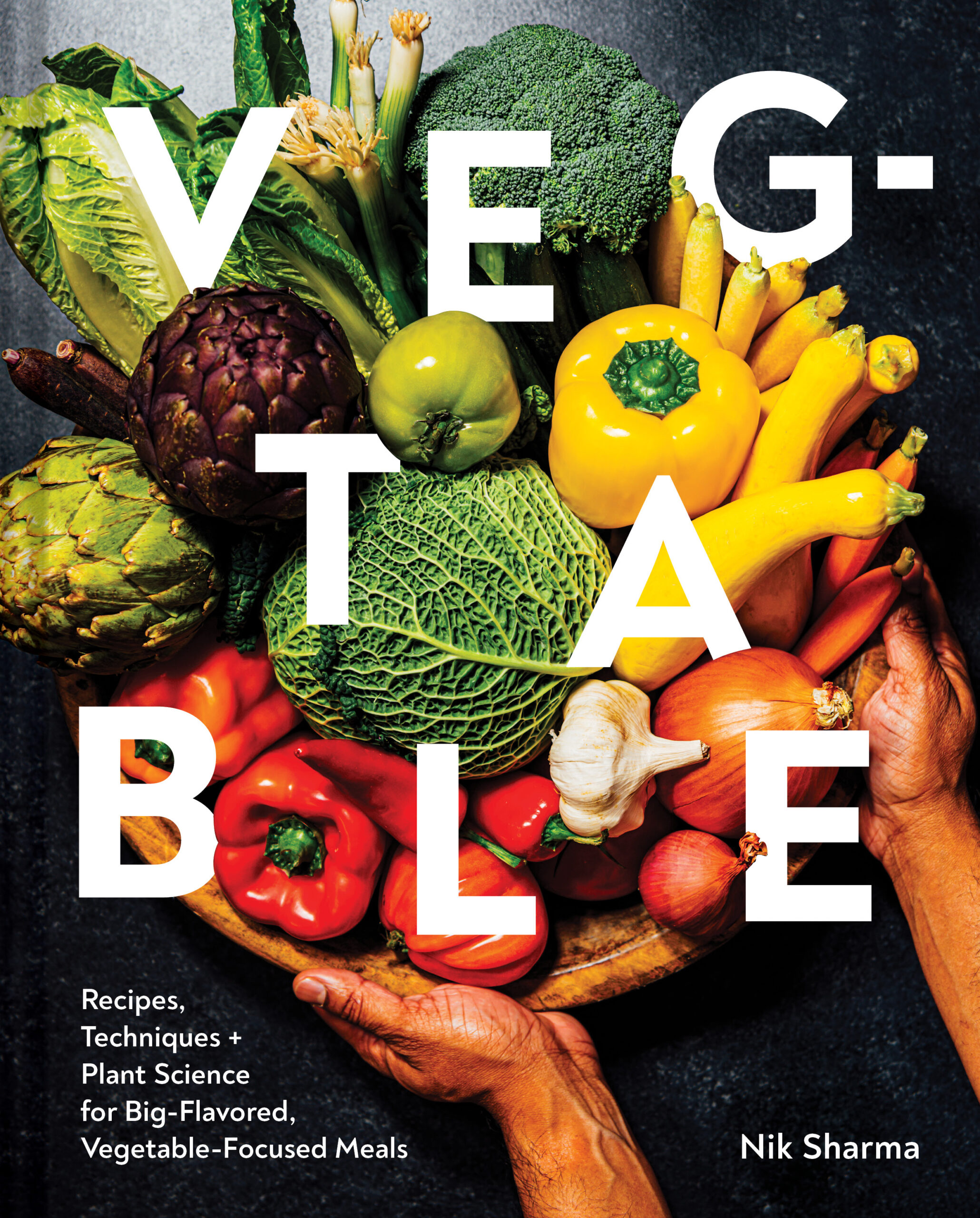




Black Pepper and Cardamom Cannelés
5 Stars 4 Stars 3 Stars 2 Stars 1 Star
4 from 1 review
If you love caramelized flavors in desserts, then you will love cannelé or canelé de Bordelaise. This baked custard originated in the winemaking regions of Bordeaux, and the cannelé refers to the fluted appearance of the mold used to prepare the pastry. The story goes that these pastries came about to finish up the excess unused egg yolks left behind during the clarification of wine (egg whites were used to clarify wines). The remaining unused yolks would be sent to nuns to feed poor children and thus came about the cannelé.
I love these pastries for their simplicity and the custard’s versatility. The custard can be infused with a wider variety of spices, and in this version, I’ve used cardamom and black pepper. Don’t whisk the ingredients aggressively; make sure your molds are hot when pouring the custard in. Read the notes before you proceed to make this pastry. While this is a simple sweet to prepare, understanding the steps is critical to get that deep dark caramel color and tender, chewy interior. Be warned, one cannelé is never enough!
Please read my newsletter for all the tips and tricks on how to make canneles.
This recipe is adapted from The Secret Recipes by Dominique Ansel
- Yield: 8
Ingredients
1 1/2 cups/360 ml whole milk
3 Tbsp unsalted butter, cubed
1/2 tsp finely ground black pepper
1/2 tsp finely ground cardamom
3 large egg yolks
3 Tbsp Rum or St. Germain
1 cup/200 g sugar
2/3 cup/90 g all-purpose flour
1/2 tsp fine sea salt
Instructions
Day 1
- Prepare the batter. Heat the milk, butter, pepper, and cardamom in a small saucepan over medium heat until it reaches 150F/65C, and the butter melts. Remove from the heat and let cool to 100F/35C.
- Whisk in the egg yolks, rum, and sugar, gently until combined. Do not whisk the batter aggressively; it will introduce too much air into the liquid.
- Add the flour and salt and whisk gently until combined. Do not whisk the batter aggressively; it will introduce too much air into the liquid. Strain the liquid through a fine mesh sieve into a container. Place a piece of plastic wrap over the surface of the batter and leave it in the refrigerator covered for 48 hours.
Day 3
Season the Molds
- Preheat the oven to 450F/230C.
- Place a few sheets of old newspapers on a baking sheet or the kitchen counter.
- Set up a boiling water bath to melt the beeswax; alternatively, melt the wax in the microwave: Place the beeswax pellets in a small heat-proof jar and add 1/2 cup of the beeswax pellets to the jar. Make a thick ring with aluminum foil and place it at the bottom of a medium saucepan. Place the jar with the beeswax pellets over the ring. Fill the saucepan with enough boiling water to the height of the beeswax in the jar. Heat the water over medium heat until the wax is completely melted.
- Line a baking sheet with foil. Place the cannelé molds in the pan, open side facing upwards, and leave in the oven for 15 minutes to preheat. Work with one mold at a time. Once hot, pour a little (about a Tbsp or less) of the hot melted wax into each mold. Carefully rotate the mold to help the hot wax coat the inside of the mold, and then flip and place it over the newspaper to get rid of any excess wax. If you’re careful, you can also pour the extra hot wax into another mold and reuse it. The layer of wax inside the mold should be very thin. Flip over and return to the baking sheet with the aluminum foil. Season all the molds and return the sheet to the oven to preheat the molds for 15 minutes.
Preparing the Cannelés
- While the cannelé molds are being seasoned, leave the batter out at room temperature for 30 minutes. The liquid will appear thick; stir gently with a silicone spatula to disperse the settled flour evenly.
- Fill each hot mold with enough batter leaving about 1/4 in/6 mm of dead space at the top. Bake in the preheated oven for 30 minutes.
- Reduce the heat to 350F/180C. Rotate the baking sheet halfway through and bake for 1 hour to 1 hour 10 minutes, until the tops appear caramelized. The tops should be a dark caramel brown but not black. Watch them bake carefully during the last 15 to 20 minutes, as they can easily overcook and burn. The pastry will rise to the baking and quickly shrink back on cooling. Once baked, remove the baking sheet with the molds from the oven and let them cool for 5 minutes in the molds. Flip the molds over a baking sheet lined with a wire rack and tap gently to release the cannelés. Let them cool completely to room temperature before serving. They taste best the day they’re made, especially in the first one to two hours. Leftovers can be stored in an airtight container for up to 4 days at room temperature or a week in the refrigerator.
Notes
- I’ve tried working with silicone molds, and the results were disappointing. The pastries don’t caramelize as nicely. I use these 5.5 cm copper-lined molds from E. Dehillerin, but you can find them elsewhere.
- Buy beeswax pellets and avoid the blocks. The pellets melt faster and are easier to work with.
- There are a lot of high temperatures and hot wax in this recipe. So BE CAREFUL! DO NOT use kitchen tongs to handle the molds (I tried the ones with and without silicone tips, they are terribly tricky to work with). They won’t grab the molds as easily, and they slip easily. Instead, get a pair of heat-proof gloves (not oven mitts) to handle the molds. If you’re careful and confident, a thick kitchen towel is a good option to grab them.
- I’ve tried applying a mixture of butter and beeswax to coat the molds. I prefer beeswax. The addition of butter didn’t do much for flavor.
- The layer of beeswax needs to be as thin as possible. Drain as much as you can. Hot extra beeswax can be reused to coat the molds. Too much wax will prevent the pastry from taking the proper shape of the mold, and it can also turn whitish-blonde at the bottom of the pastry where the mold touches.
- If the pastry gets stuck to the mold on cooling, immerse the mold in boiling water to help loosen the cannelé.
- I clean the molds by wiping them down with dry paper towels and storing them.
- Author: Nik Sharma


3 Responses
Hi Nik
When you strain the batter should you push through any thicker bits of batter. I ended up with a thick layer on top after resting in the fridge. I did use clingfilm.
Cheers
Hi Laura, It sounds like the batter formed a skin on top. Strain it through a fine mesh sieve but the next time you try the recipe, let the clingfilm sit right on the surface of the batter. This will prevent the formation of the skin.
The warmth from the cardamom and the subtle heat from the black pepper create a symphony of flavors that beautifully contrast with the sweet, custardy interior. It’s an unexpected but delightful marriage of spices that adds depth and intrigue to this classic French pastry. What’s fascinating is how these spices not only infuse their distinct flavors but also elevate the overall sensory experience. The aromatic blend of spices wafting through the air while savoring each bite is an absolute treat for the taste buds. These black pepper and cardamom canelés are a testament to the magic of experimenting with flavors. They bring a whole new dimension to a traditional treat, making them an absolute must-try for anyone looking to tantalize their palate with something uniquely delightful.